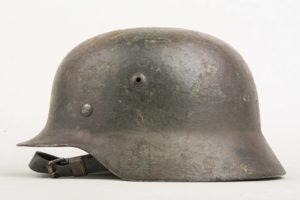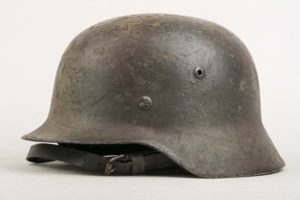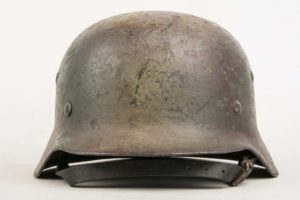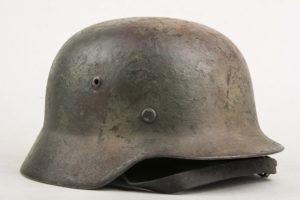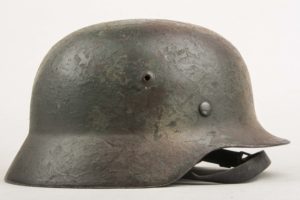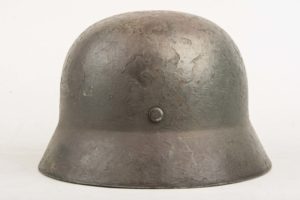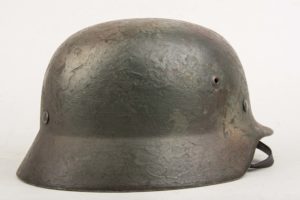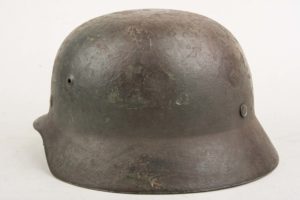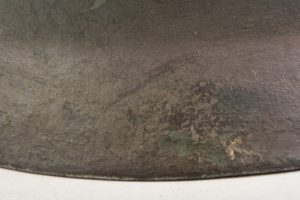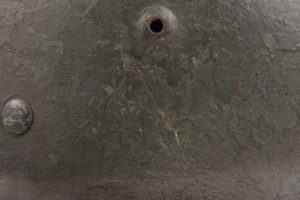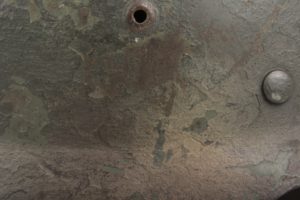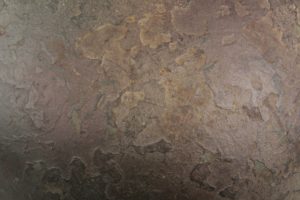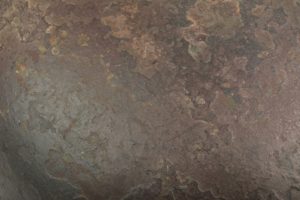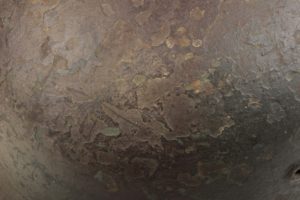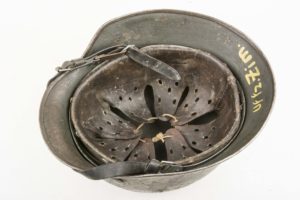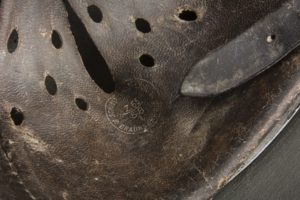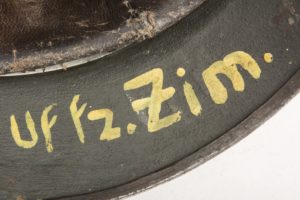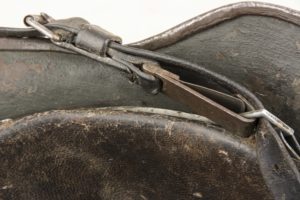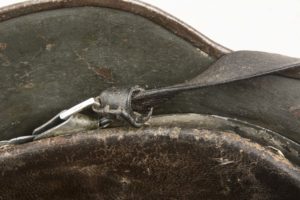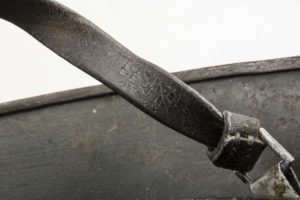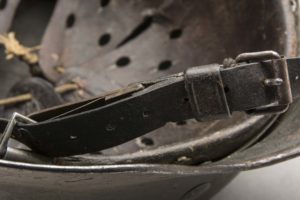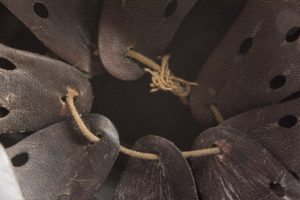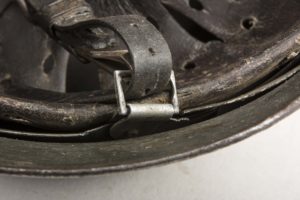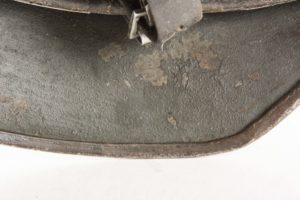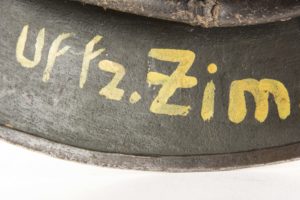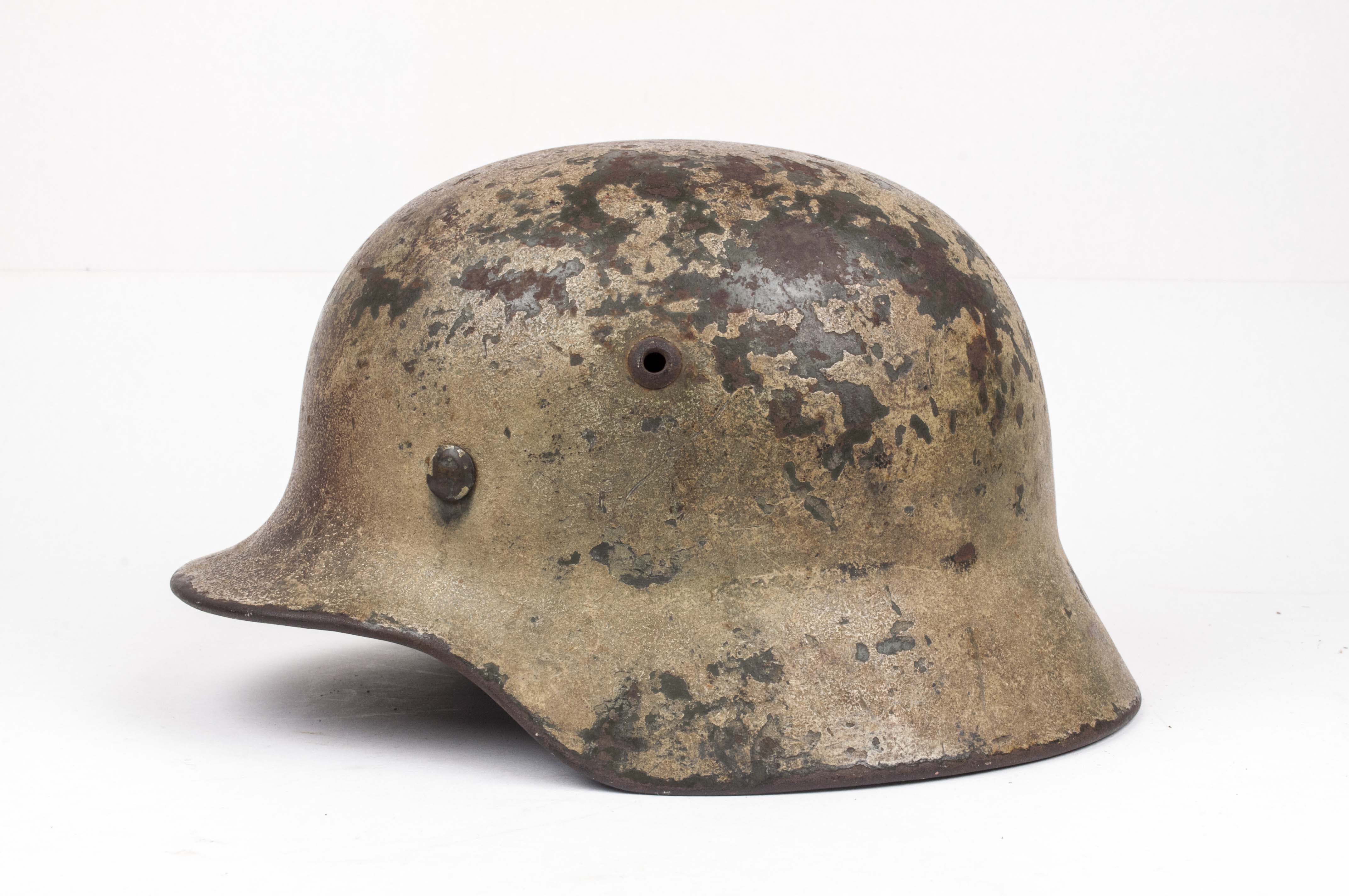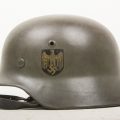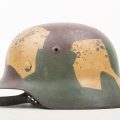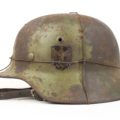Helmet – M35 – ET66 – Three tone camouflage
Arguably the helmet was the most recognizable part of the individual German soldiers appearance. With a design that derived from the type used in world war one, the German helmet offered more protection then ones used by it’s enemies. The quality field gray painted steel helmet with two decals and rolled steel rim and leather liner was a labor intensive product and simplified as the war progressed. The earliest model helmet used in world war two was the model 35 or M35 Stahlhelm. During the war the helmet was simplified in 2 stages. In 1940 the airvents changed from separate rivets affixed to the helmet shell to stamped in the main body of the shell. In 1942 a new model was introduced where the rim of the shell was left sharp and not rolled over as previous models. These models are known in the collector community as M40 and M42. The low sides that protect the neck and ears, the tell tale design that the Germans introduced in 1935 can still be seen in modern day army helmets.
Model: M35 Heer (Presumably)
Decal: Heer (Presumably)
Paint:
1. Factory applied dull green gray paint with a factory applied Kriegsmarine decal and national tricolor decal. The national tricolor was removed as per regulations.
2. Two tone brush applied “Reissue” paint with another decal applied.
3. A green and tan overspray
Markings: ET66
Shell Maker: Eisenhüttenwerke, Thale.
Liner: First pattern Schuberth liner dated 1931. One of 2000 produced.
Size: Shellsize 66, headsize 58 cm
Notes: A uncommon early M35. The helmet has its original early liner dated 1931! The helmet has a 1935 dated chinstrap with a carabiner hook. Looking at the shell it looks different then most helmets I’ve seen. This is one of the earliest M35 helmets with a hand rolled rim. Like the period newsreel where the one guy hammers down the rim of the helmet. The helmet fully retains its original paint consisting of three separate layers; Apple green, Rautarn and three tone spray paint. Inside the helmet is named Uffz(Unteroffizier) Zim. Due to the rough overpaint of the helmet inside the helmet I can not make out any lot numbers or maker marks. The helmet is a 66 shell and a 58 liner. This helmet was retrieved out of the woodwork in the Netherlands. My favorite thing about this helmet is that it is super early, but kept in use until the end and is still around today!



